The United Nations Educational, Scientific and Cultural Organization (UNESCO) recognized the Acropolis of Athens, Greece, as a World Cultural Heritage site in 1987.
Acropolis in Greek means fortified city. In ancient Greece, every place had a stronghold known as an acropolis. In times of enemy attack, citizens would gather in the acropolis for refuge and protection. However, the Acropolis in the city of Athens is the most famous in the world, so today, when people mention an acropolis, they are usually referring to the Acropolis of Athens. All the monuments surrounding the Acropolis are collectively referred to as the Acropolis Temple Complex or Ancient Acropolis.
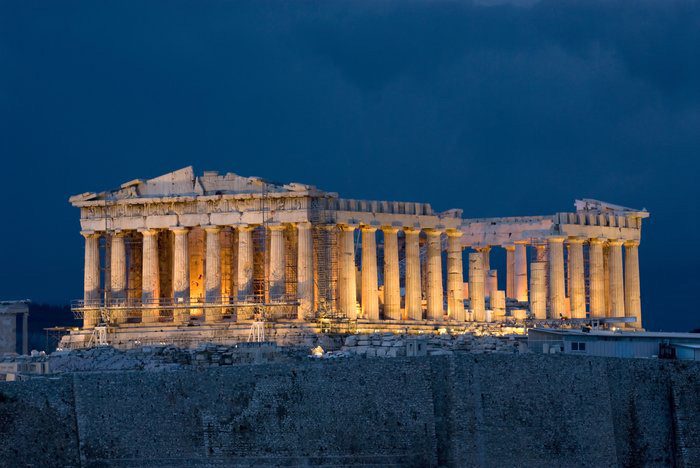
The Acropolis in Athens stands at an elevation of 150 meters above sea level and is also known as Cecropia, named after the first king of Athens (legend has it that he was part serpent).
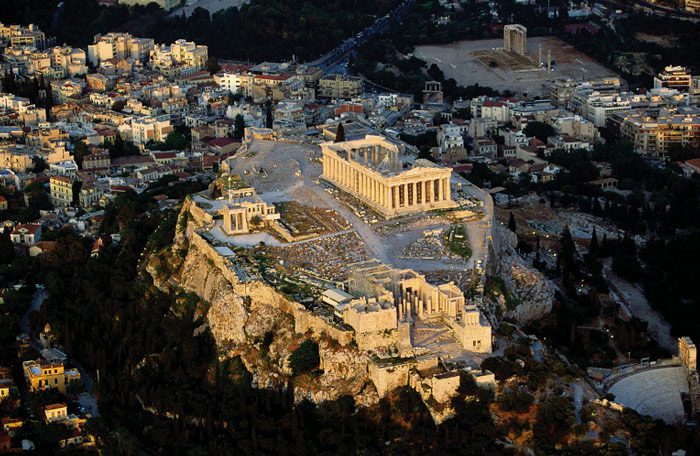
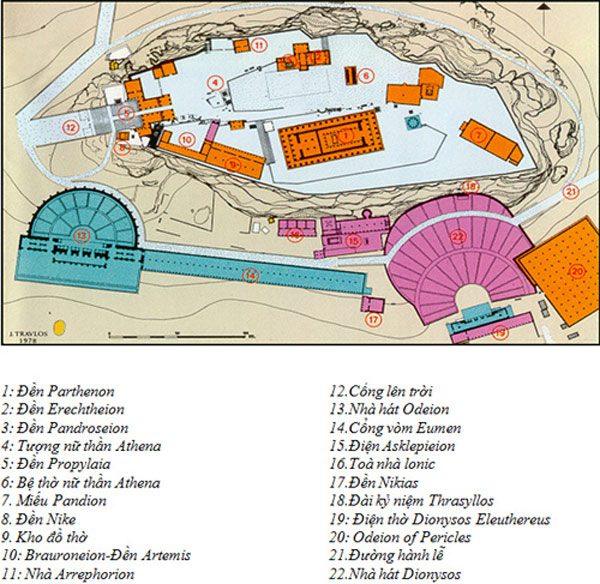
Overview of the ancient heritage site – Acropolis Temple Complex
The Ancient Acropolis provides the current generation with a panoramic view of a golden age of Greek civilization. In 490 BC, the Athenians began laying the first stones to build the Acropolis to honor the city’s guardian deity – the goddess Athena Parthenos. However, ten years later, this achievement was destroyed by the Persians. Thirty years later, Pericles initiated a grand reconstruction of the site on a much larger scale than the original structure that had been destroyed.
The Ancient Acropolis or Acropolis Temple Complex consists of many structures, among which notable ones include: the Propylaea Gate; the Erechtheion; the Temple of Athena Nike; the Parthenon… All the constructions at the Acropolis were built with Doric architectural style and symbolism.
Propylaea Gate
The term Propylaea in Greek means entrance gate. The Propylaea Gate is constructed from white marble, gray marble, and limestone. The northern and southern wings of the Acropolis extend from the archway of the central building, giving it an appearance of welcoming visitors. The central building consists of marble blocks carved to form recessed panels on the ceiling, painted in blue with glittering gold.
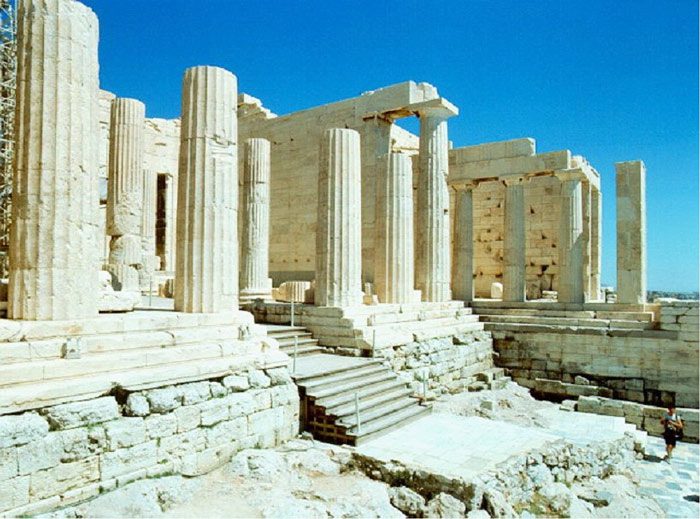
The Propylaea Gate is constructed from gray and white marble.
Erechtheion
The Erechtheion is a structure characterized by its distinctly Greek architecture. It was built in an asymmetrical layout, comprising three almost independent sections with three separate roofs. This architectural style and construction method resulted in a remarkably grand and impressive building. To this day, the Erechtheion is considered a peculiar phenomenon of Greek architecture and a masterpiece of art.
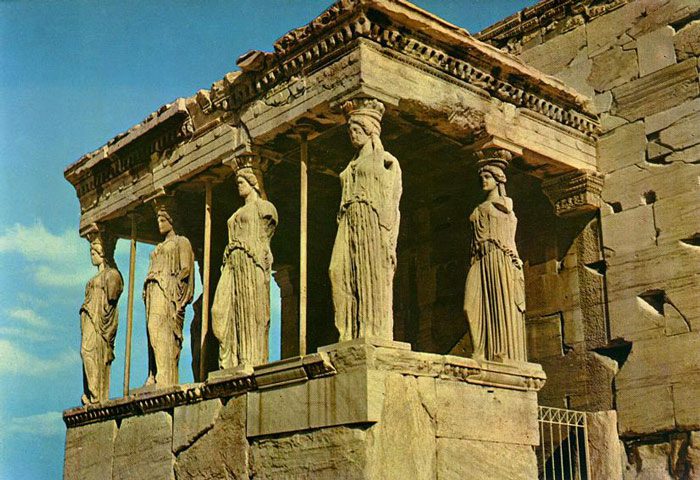

Temple of Athena Nike
The Temple of Athena Nike was constructed from marble and is relatively small, making it easy to place on the edge of a rocky outcrop, a favored position of the goddess Athena.

Parthenon
The Parthenon is considered the most beautiful architectural structure of ancient Greece and also the most beautiful structure in the history of world architecture. Naturally, this building is a masterpiece of art not only of Greece but of the entire world. The Parthenon is distinctly divided into three parts: the Pronaos, which is the entrance hall; the Naos, which is the sanctuary housing the statue of the goddess Athena; and the Opictodom, meaning the room for treasures. The temple features a colonnade surrounding it, with eight columns on the two main façades, differing from other ancient Greek architectures, which typically have six columns. Along both sides of the temple are seventeen supporting columns. The Parthenon was constructed entirely from bright-colored Pentelic marble, while the roof and ceiling were intricately carved from fragrant Cypress wood. The edges of the temple feature reliefs depicting battles fought by the Athenians against other armies or deities. The supporting columns of the temple are placed directly on the ground without bases. Above these columns, a water drainage system protrudes, incorporating lion-head rainwater spouts.
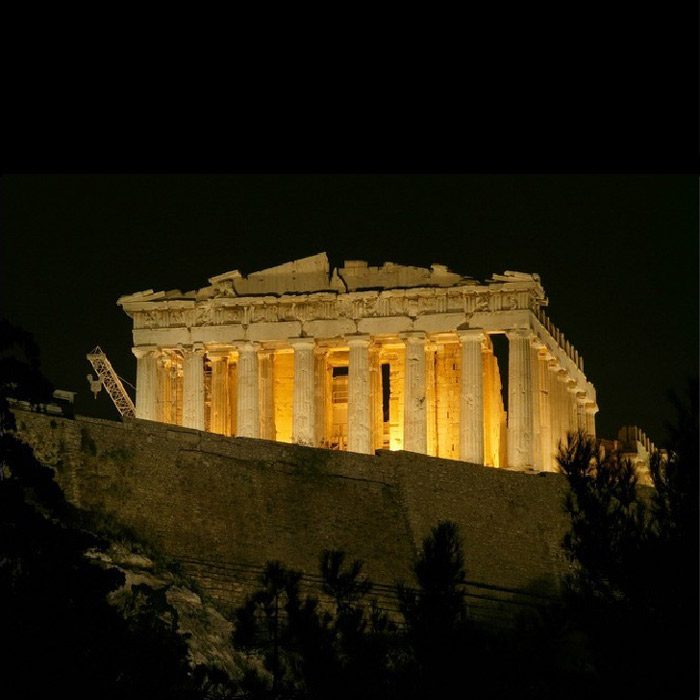
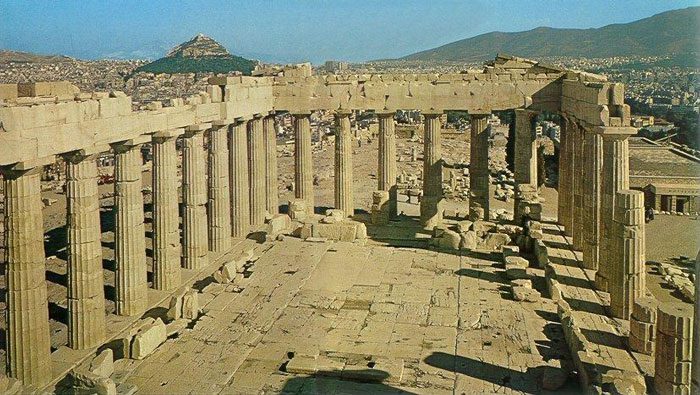
The Parthenon is regarded as a symbol of Greece and a masterpiece of ancient Greek architecture.
The architecture of the Parthenon is quite unique, with an unusual width designed to create ample space for the statue of the goddess Athena. The statue was crafted from gold and ivory by the renowned architect Phidias. Unfortunately, this artistic masterpiece no longer exists today. However, the carvings on the columns and walls of the temple are incredibly impressive and can be regarded as the standard of sculptural art. On the eastern side of the temple are carvings depicting the legendary battle of the gods against the giants. To the south of the temple is the battle of the Lafrithes and the hero Theseus in their confrontation with the centaurs. To the north of the temple are images from the legendary Trojan War.
Additionally, the Ancient Acropolis is home to other architectural structures such as the Theatre of Dionysus – the oldest theater still existing in ancient Greece; the Odeon; and the Eumenes Arch…
Today, the cultural heritage of the Ancient Acropolis is not only a famous architectural site in Greece but also a globally admired architectural achievement and a symbol of ancient Greece.
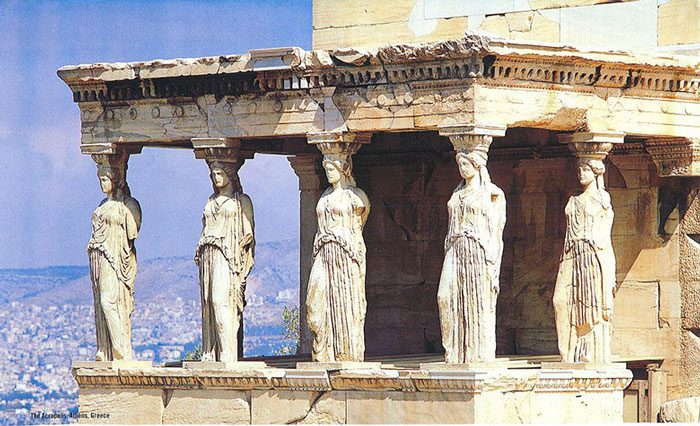
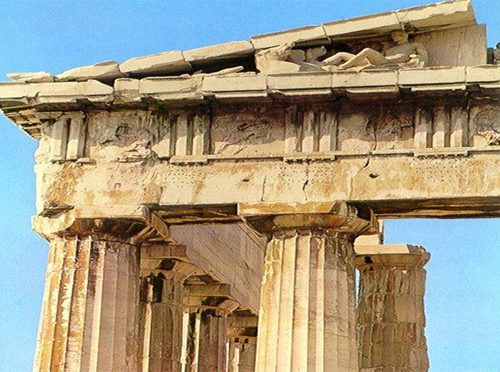
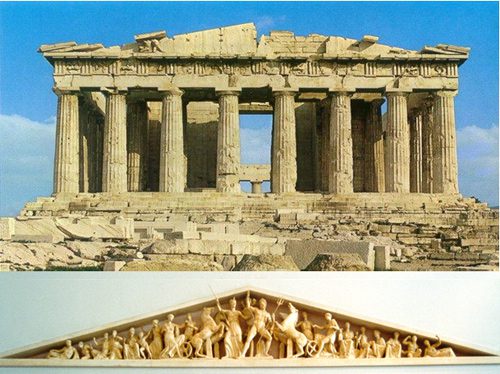
The carved works on the columns and roof of the Parthenon


















































